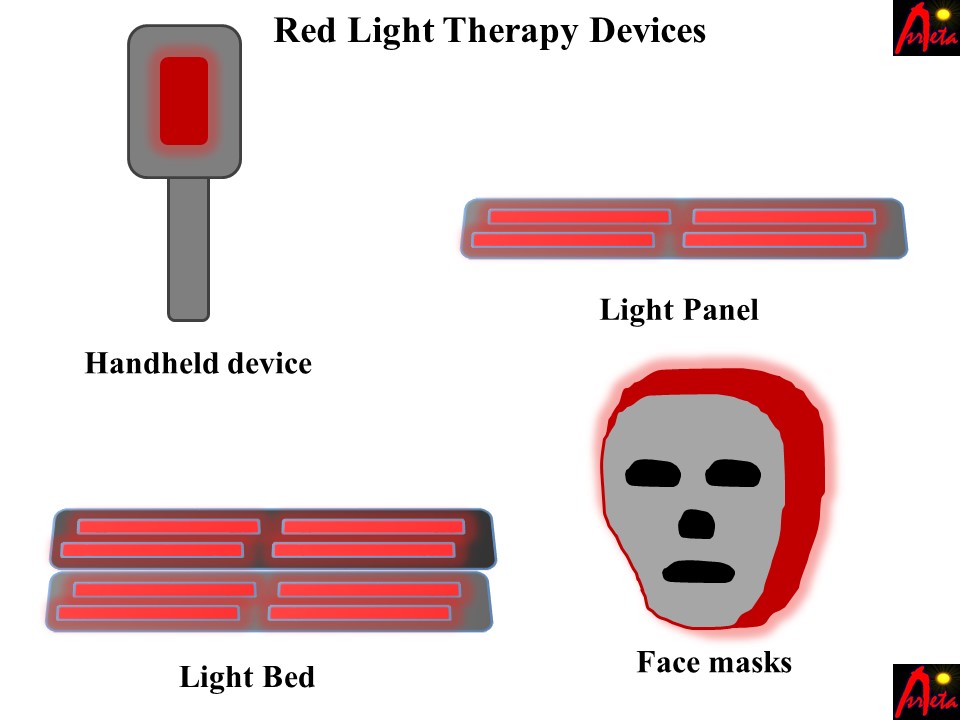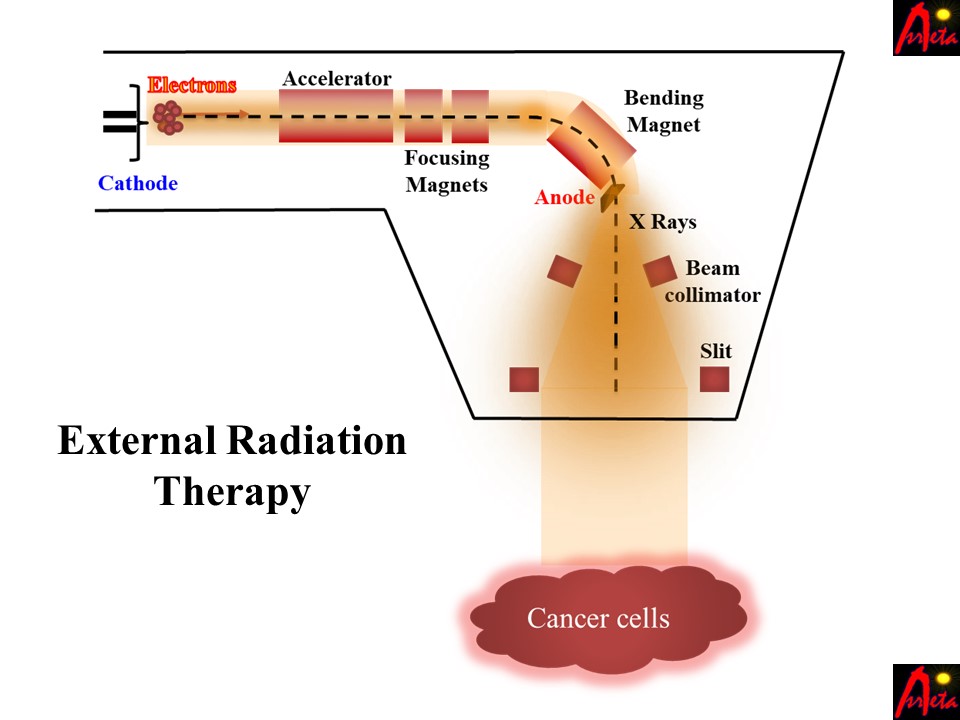Introduction
Red light therapy, which relies on low-level light and is therefore sometimes also known as low-level light therapy (LLLT), is a non-invasive healing technique that uses low-frequency wavelengths of red light or near-infrared light. These lights are able to stimulate a body’s natural process of healing. It is believed that this therapy works by penetrating the skin and stimulating the powerhouses of the cells also known as mitochondria. When mitochondria are stimulated they produce more adenosine triphosphate (ATP), which is an essential ingredient for the regeneration of the cell and their repair.
Working of red light therapy
The mechanism by which red light therapy works and provides these treatments is not yet fully understood, but it is believed to motivate a body’s natural healing processes at the cellular level. Red light therapy uses specific wavelengths of light, typically in the range of 630 to 660 nanometers, which can penetrate the skin and reach the underlying tissues.
When the red light is absorbed by the cells, it is believed to fuel the creation of adenosine triphosphate (ATP), which is the energy source for cells. This increased ATP production is thought to lead to improved cell function and metabolism, which can help with tissue repair, reduce inflammation and pain, and improve the appearance of the skin.
Red light therapy can also enhance the production of collagen and elastin. These proteins are extremely essential for healthy skin. Elastin provides flexibility and resilience whereas collagen imbues the skin with elasticity and firmness. Since red light helps in the production of these proteins, red light therapy also helps to reduce the appearance of fine lines and wrinkles.
Overall, red light therapy is believed to have a wide range of benefits for the skin and body, that includes improved wound healing, reduced inflammation, and relief of pain. However, more research is needed in order to fully understand the mechanisms underlying these effects and to determine the optimal parameters for treatment.
Devices used for red light therapy
The devices used for red light therapy typically operate within a specific range of wavelengths and frequencies that are fixed for red and near-infrared regimes. The most commonly used wavelength range for these devices is between 630 and 660 nanometers (nm), which corresponds to a frequency range of 455 to 484 terahertz (THz). In this range of wavelengths, different wavelengths may have different effects on the human body and skin.
Near-infrared (NIR) light therapy, which closely resembles red light therapy, is another type of light therapy that is sometimes used in conjunction with red light therapy. Since the NIR light has a longer wavelength (800 and 880 nm) than red light therefore it can penetrate deeper into the skin and tissues. Therefore, NIR light therapy is sometimes used for pain relief, inflammation reduction, and muscle recovery.
Red light therapy is more commonly used to make skin look better by improving its appearance, reducing pain and inflammation, and promoting the healing of wounds. It is also used in the treatment of conditions such as depression, arthritis, and hair loss. Red light therapy can be performed through a number of devices, and these devices can come in all types such as handheld devices, light beds, and light panels. Typically this therapy is performed in a clinical setting, but some of the devices which are designed for use at home can also be found in the market.
Several types of red light therapy devices are available in the market, each designed for different applications and settings. Some of the most common types of light therapy devices are mentioned below and shown in Figure 1.
Handheld devices: These small, portable devices can be held directly over the affected area. They are often used for spot treatments and are convenient for use at home.
Light panel: These panels s are larger devices that emit red or near-infrared light over a wider area. These panels are often used in the clinical setting and are designed for full-body treatments.
Light beds: These devices are even larger than panels, can cover even a wider area, and are designed to be used in a lying position, allowing for a more immersive and relaxing treatment.
Face masks: These masks are specialized devices that are designed to cover the entire face. These masks emit red or near-infrared light and are used to improve the appearance of the facial skin. They are used for facial treatments and can improve the appearance of fine lines, acne, and wrinkles.

When selecting a device for red light therapy, it is always important to consider factors such as the intensity and wavelength of the light, as well as the intended application and setting. It is important to follow the instructions provided by the manufacturer carefully and to consult with a medical professional before beginning the therapy.
Safety and side effects of red light therapy
Red light therapy is generally considered to be safe as it is a non-invasive technique and has only a few reported side effects. However, as with any medical treatment, there are some “potential” risks and considerations to keep in mind. These potential risks and considerations are given below.
Eye damage: Light therapy can be harmful to the eyes if the light has a large intensity or if the operating wavelength is too close to the ultraviolet range (ultraviolet wavelength has a higher frequency and therefore larger energy). It is always a good safety measure to wear protective goggles when using red light therapy devices that are emitting high-intensity light.
Skin irritation: Some people may also experience irritation on the skin, redness, or rashes after being introduced to red light therapy. These side effects are usually temporary and can be treated with the help of over-the-counter creams or lotions.
Interference with medication: The redlight therapy can also interfere with certain medications, which increase a person’s sensitivity to light (e.g. tetracycline). It is therefore important to consult with a medical specialist before beginning any new therapeutic treatment, especially if you are taking some medications.
Heat sensitivity: Red light therapy can generate heat, which may be uncomfortable or even harmful for people who are sensitive to heat. It is important to follow the manufacturer’s instructions carefully and to avoid overexposure to the light.
Pregnancy: There are very limited studies on the safety of red light therapy during pregnancy, so it is typically not recommended for pregnant women. This is even more restricted for NIR therapy because it has a higher wavelength and therefore more penetrating power.
Overall, red light therapy is considered to be a safe and non-invasive treatment with few reported side effects. However, it is important to follow the manufacturer’s instructions carefully and to consult with a healthcare professional if you have any concerns or medical conditions that may be affected by the treatment.
It’s important to note that the operating wavelength and operating frequency for red light therapy may vary depending on the device being used and the specific application for which therapy is being performed. The intensity and duration of the treatment can also vary and may also affect the therapeutic benefits. Therefore, it is recommended to follow the instructions given by the manufacturer and consult with a healthcare professional before beginning any new therapy.
Further readings
If you liked this post, you might like following posts as well.
- Demystifying Solar Panel Specifications: Your Guide
- Lecture 1 on Vector Algebra and different vector operations
- Construction, working, and new technologies of OLED TV
- Laser and its applications in medicine and technology
- LED light, its construction, types and colors, power, life, and technology

